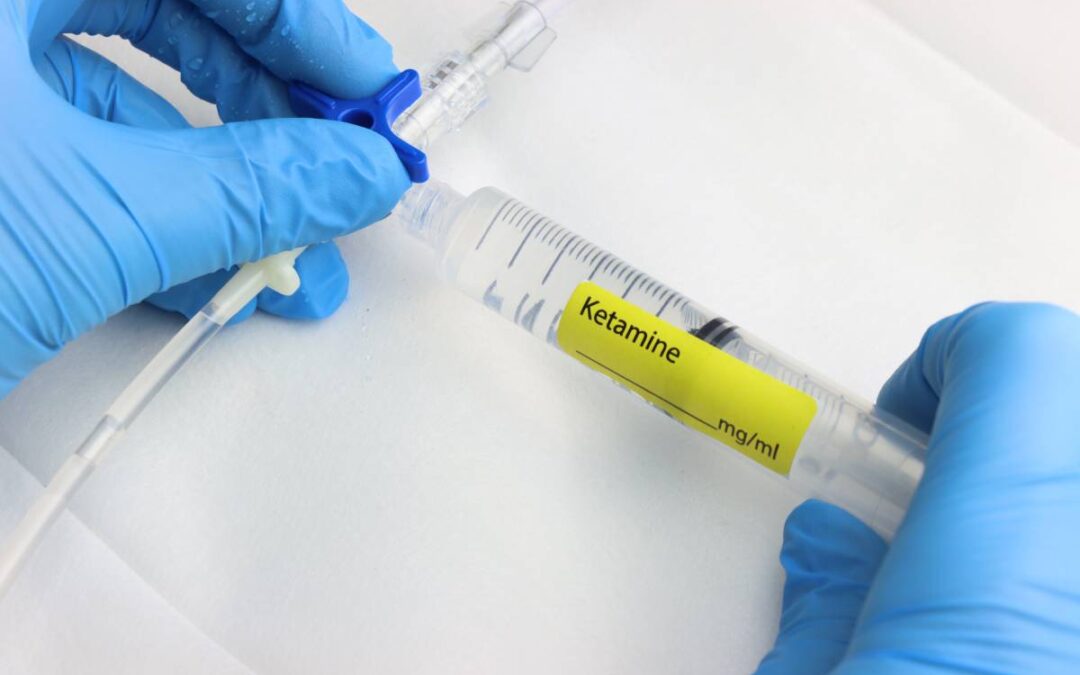Ketamine is a common anesthetic agent used in operating rooms around the world. Its ease of storage and good safety profile makes it attractive for use in regions where refrigerators, oxygen, complex monitoring systems, and electricity are scarce. Ketamine is known to have analgesic, hypnotic, and amnesic properties; thanks to this versatility, it plays an invaluable role in the developing world.1 Starting as a PCP derivative, ketamine’s evolution has spanned anesthetic, veterinary agent, therapeutic for major depression, and recreational drug.
The evolution of ketamine is rooted in 1956, when Dr. Harold Maddox, a medicinal chemist at Parke-Davis, discovered a novel chemical reaction leading to the synthesis of phencyclidine (PCP).2 The earliest animal studies of PCP demonstrated the drug induced a drunken state in rodents and an immobilized state in pigeons. Further animal testing revealed the agent caused canine delirium and catalepsy in monkeys.2,3 In their publication, the researchers defined catalepsy as an akinetic state where movement was restricted by what appeared to be motor or sensory failure. Nonetheless, phencyclidine began being administered as a human anesthetic in 1958 by Parke-Davis, the pharmaceutical company that discovered the compound two years prior. Published studies report PCP caused increases in blood pressure, respiratory rate, salivation, and minute volume. However, compared to other available sedatives/analgesics of the time, PCP had the advantage, since it did not cause cardiovascular or respiratory depression. Regardless, increased clinical use led to reports of severe bodily excitation after PCP administration along with intense psychotic reactions, resulting in phencyclidine being declared unsuitable for human use and moving out of clinical settings.3
The journey continues, however, with Dr. Cal Bratton, head of pharmaceutical research at Parke-Davis, who encouraged his students and colleagues to study PCP in the hopes of reducing its side effects. In 1962, Bratton’s consultant, Dr. Calvin Stevens, synthesized a phencyclidine derivative that was short-acting and produced excellent anesthesia. This step in its evolution is when ketamine itself first appeared. Composed of a ketone and an amine, ketamine was first used for clinical studies in 1964, on volunteer prisoners at the Jackson Prison. Adverse effects were one in three, and the term “dissociative anesthetic” came about to describe how patients appeared ‘disconnected’ after ketamine administration.2,3
Parke-Davis patented ketamine for human and animal use in 1966, and by 1970, the agent was approved for human administration by the United States Food and Drug Administration. Its sympathomimetic properties led to ketamine being used in the field for soldiers during the Vietnam War.3 Accordingly, ketamine became the first choice of drug for anesthesiologists for the next two decades. However, in the 1980s, stories around ketamine’s ability to cause psychedelic sensations began circulating once more. Concerns around these psychedelic effects, in addition to the arrival of new intravenous anesthetics such as propofol, led to the next step in ketamine’s evolution story — gradual fading from use, at least in the affluent world.3,4
Molecular studies showed ketamine is an antagonist for the NMDA receptor, with NMDA being a biomolecule involved in pain hypersensitivity.5 This finding sparked an interest in leveraging ketamine for therapeutic analgesia. Early cohort studies demonstrated ketamine was effective in mitigating somatic and neuropathic pain for cancer patients. In interviews, the authors proposed that using ketamine in conjunction with other NMDA receptor antagonists might be able to target and control differential subpopulations of neurons governing neuropathic pain.5 Further in vitro experiments supported the idea that ketamine’s analgesic properties are a direct result of its inhibition of synaptic excitation of NMDA receptors, which implied ketamine can alter memory consolidation, cognitive processes, and consciousness.3,6
Interest in these properties of ketamine prompted a randomized, placebo-controlled, double-blinded, crossover study from the National Institute of Mental Health. Their seminal work reported that patients with treatment-resistant major depression (TRD) who received ketamine showed significant improvement on depression rating scales. The effect size was time-dependent, with the strongest difference between groups receiving ketamine and placebo observed within the first two hours.7 While most other treatments for TRD can only show results on the scale of a few weeks, ketamine’s onset of therapeutic action is a few hours, making the molecule much more attractive for use in patients with high suicidal risk.3 Research on ketamine’s potential for treating depression marks the current stage of the evolution of the drug. With the emergence of ultra-short-acting S-ketamine analogues, ketamine has once again become prominent in the affluent world.
The evolution of ketamine is anything but linear, from its origins as PCP to its downfall after it became associated with psychedelic side effects to its re-emergence as a pharmacological treatment for TRD. Understanding ketamine’s story helps us see how far modern science has come.
References
- Craven, R. “Ketamine.” Anaesthesia, 62, no. s1, Dec. 2007, pp. 48-53. DOI.org (Crossref), https://doi.org/10.1111/j.1365-2044.2007.05298.x
- Domino, Edward F., and David S. Warner. “Taming the Ketamine Tiger.” Anesthesiology, 113, no. 3, Sept. 2010, pp. 678-84. DOI.org (Crossref), https://doi.org/10.1097/ALN.0b013e3181ed09a2
- Mion, Georges. “History of Anaesthesia: The Ketamine Story- Past, Present and Future.” European Journal of Anaesthesiology, 34, no. 9, Sept. 2017, pp. 571-75. DOI.org (Crossref), https://doi.org/10.1097/EJA.0000000000000638
- Pai, Anirudda, and Mark Heining. “Ketamine.” Continuing Education in Anaesthesia Critical Care & Pain, 7, no. 2, Apr. 2007, pp. 59-63. DOI.org (Crossref), https://doi.org/10.1093/bjaceaccp/mkm008
- Okon, Tomasz. “Ketamine: An Introduction for the Pain and Palliative Medicine Physician.” Pain Physician, 10, no. 3, May 2007, pp. 493-500. DOI.org (Crossref), https://doi.org/10.36076/ppj.2007/10/493
- Anis, N. A., et al. “The Dissociative Anaesthetics, Ketamine and Phencyclidine, Selectively Reduce Excitation of Central Mammalian Neurones by N-Methyl-Aspartate.” British Journal of Pharmacology, 79, no. 2, June 1983, pp. 565-75. PubMed Central, 10.1111/j.1476-5381.1983.tb11031.x
- Zarate, Carlos A., Jr, et al. “A Randomized Trial of an N-Methyl-D-Aspartate Antagonist in Treatment-Resistant Major Depression.” Archives of General Psychiatry, 63, no. 8, Aug. 2006, pp. 856-64. Silverchair, https://doi.org/10.1001/archpsyc.63.8.856







Recent Comments